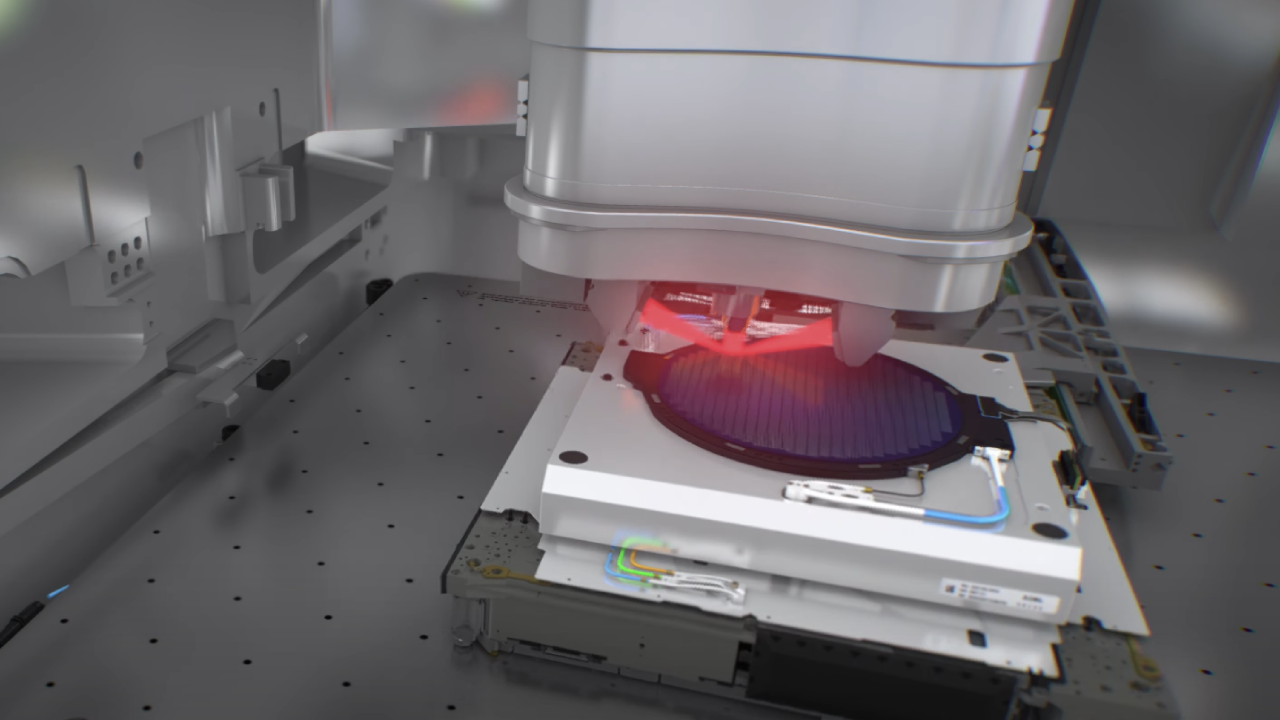
Nvidia's cuLitho platform speeds up mask design for lithography by 40x.
Among the slew of technical tidbits from Nvidia’s GTC online keynote this week was a new software tool for accelerating the process of manufacturing chips. Known as cuLitho, it speeds up the process of designing the masks used in lithography by a claimed 40 times.
Nvidia says leaders in the chip manufacturing industry TSMC, ASML, and Synopsys have all signed up for cuLitho. Of course, cuLitho runs exclusively on Nvidia’s GPUs, which in turn are manufactured by TSMC.
So, that means Nvidia commissioning TSMC to manufacture GPUs, only to sell them straight back to TSMC in order to be used for cuLitho. Nice work if you can get it.
Nvidia says an installation of around 4,000 of its H100 Hopper server GPUs can replace 40,000 CPU-based servers, do the same work 40 times faster, all while using nine times less power.
The work in question is designing the photomasks used in the lithography process. In simple terms, chips are made by shining light through a patterned mask onto a silicon wafer, etching the individual components including wires and transistors into the surface of the wafer.
In practice, the features of the chip are built up in layers using a series of masks. Apparently, it takes 89 masks to create Nvidia’s own H100 Hopper GPU.
(Image credit: Future)
Best CPU for gaming: The top chips from Intel and AMD
Best gaming motherboard: The right boards
Best graphics card: Your perfect pixel-pusher awaits
Best SSD for gaming: Get into the game ahead of the rest
Anyway, given the huge complexity of modern chips containing billions of features, the masks are, in turn, extremely intensive to design. What’s more, complex computations are involved to ensure that the mask enables a sharp rather than blurred image is etched onto the wafer by limiting diffraction.
As feature sizes shrink ever further, the computational task of reducing diffraction only gets harder. Hence the huge server arrays employed by the likes of TSMC to tackle the job.
Nvidia says its new cuLitho can reduce the computational workload for creating a mask from two weeks to eight hours, speeding up the overall chip design and production process. Eventually, Nvidia reckons cuLitho won’t just speed things up but also enable higher chip density and better yields.
Whatever, selling chips back to the company that made the chips for you so that they can manufacture those chips faster is a pleasingly circular ruse that only Nvidia could pull off. But seeing as it should help all of TSMC’s customers, not just Nvidia itself, hopefully it will mean faster and (dare we hope for it) cheaper CPUs and GPUs in future.





